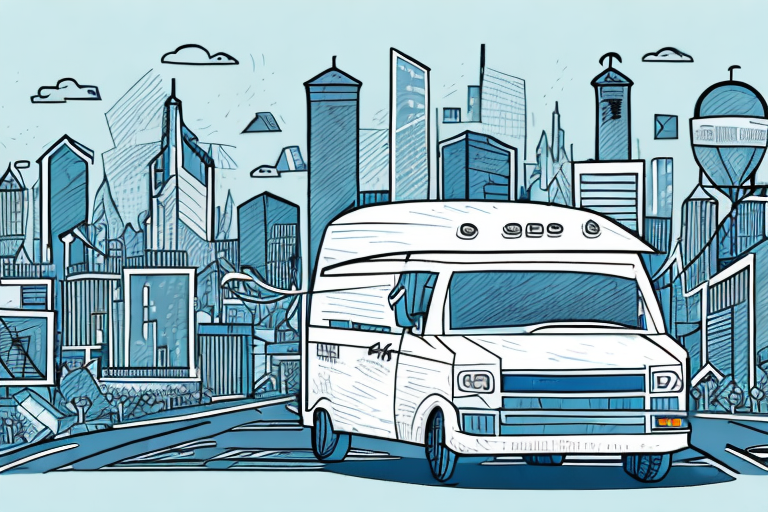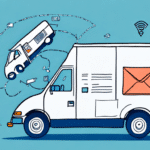Digital Transformation in Postal and Courier Services
Digitalization has significantly transformed the postal and courier delivery industry, altering how individuals and businesses communicate and conduct transactions. With the decline in traditional letter mail due to the rise of email and other digital channels, postal services have innovated to stay competitive.
Adapting to Digital Communication
Postal services have expanded their offerings to include digital services such as e-government and e-commerce platforms. This diversification helps maintain relevance in a rapidly changing digital landscape.
Investing in Advanced Technologies
Many postal services have implemented automated sorting systems powered by machine learning algorithms to enhance efficiency. Additionally, the use of drones for delivering packages to remote areas has emerged as a faster and more cost-effective alternative to traditional methods.
E-Commerce and Its Influence on Delivery Services
The exponential growth of e-commerce has reshaped the courier delivery industry, creating both opportunities and challenges for service providers.
Surge in Delivery Demand
E-commerce has enabled businesses to reach a global customer base, significantly increasing the demand for delivery services. Courier companies have responded by expanding their capacity, networks, and technological investments.
Last-Mile Delivery Challenges
The final leg of delivery, known as last-mile delivery, has become more complex and costly due to the rise in individual package deliveries. Solutions such as crowd-sourced delivery and the use of autonomous vehicles are being explored to address these challenges.
Technological Innovations in Delivery
Emerging technologies are revolutionizing the delivery industry, offering new ways to enhance efficiency and customer satisfaction.
Autonomous Delivery Vehicles
Autonomous vehicles can navigate traffic and deliver packages more efficiently than traditional methods. This technology is particularly beneficial in urban areas where traffic congestion is a significant issue.
Drones and Robotics
Drones and delivery robots offer the potential to reduce delivery times and costs while minimizing the environmental impact. However, regulatory and technical hurdles must be overcome for widespread adoption.
Sustainability and Environmental Impact
Environmental concerns are increasingly influencing the strategies of delivery companies, driving the adoption of greener solutions.
Electric Vehicles and Alternative Delivery Methods
Transitioning to electric vehicles and exploring alternative delivery methods like cargo bikes help reduce the carbon footprint of delivery services. While the initial investment may be higher, long-term benefits include lower fuel costs and improved public perception.
Optimizing Delivery Routes
Utilizing technologies such as machine learning and the Internet of Things (IoT) can optimize delivery routes, resulting in reduced fuel consumption and lower emissions.
Enhancing Customer Experience
Customer satisfaction is paramount in the delivery industry, and companies are implementing various strategies to enhance the customer experience.
Real-Time Tracking and Communication
Providing real-time tracking updates and clear communication channels allows customers to monitor their packages and receive timely notifications, increasing transparency and trust.
Flexible Delivery Options
Offering flexible delivery options, including same-day or weekend deliveries, caters to diverse customer needs and enhances overall satisfaction.
Future Outlook and Trends
The delivery industry is poised for continued evolution, driven by ongoing trends and emerging opportunities. Companies that embrace technology and adapt to changing market demands are well-positioned for success.
Growth of E-Commerce
The sustained growth of e-commerce will continue to drive demand for efficient and reliable delivery services. Service providers must scale their operations accordingly to meet this demand.
Regulatory Compliance and Standardization
As the industry becomes more globalized, adhering to international regulations and standards is crucial for seamless operations and maintaining customer trust.
Balancing Efficiency with Sustainability
Future success will depend on the ability to balance operational efficiency with sustainable practices, ensuring long-term viability and environmental responsibility.
Addressing Rural Delivery Challenges
Delivering packages to rural or remote areas presents unique challenges that require innovative solutions to ensure cost-effective and efficient service.
Infrastructure and Accessibility Issues
Poor road infrastructure and low population density in rural areas can increase delivery times and costs. Solutions such as drone delivery and optimized routing are being explored to mitigate these challenges.
Technological Solutions for Remote Areas
Implementing technologies like satellite internet can improve connectivity, enabling better communication and package tracking in rural regions.
Regulatory Frameworks and Global Standards
Compliance with various regulations is essential for international delivery service providers, ensuring safe, secure, and standardized operations worldwide.
International Cooperation and Standardization
The Universal Postal Union (UPU) plays a pivotal role in fostering international cooperation and setting standardized practices for the global postal system, facilitating smoother cross-border deliveries.
Adapting to Local Regulations
Delivery companies must stay informed about and comply with local regulations in each market they operate, which can vary significantly and impact operational strategies.
Conclusion
The post and courier delivery industry is undergoing significant transformation driven by digitalization, e-commerce growth, and technological innovations. While challenges such as last-mile delivery, rural accessibility, and environmental impact persist, the adoption of advanced technologies and sustainable practices presents ample opportunities for growth and improvement. Companies that effectively balance efficiency, cost-effectiveness, and customer satisfaction, while adhering to regulatory standards, will thrive in the evolving delivery landscape.






















